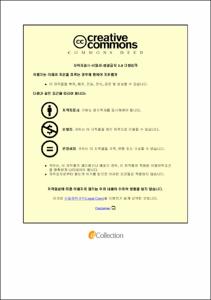선진 Bow-Tie 위험성평가기법을 활용한 근본원인분석에 대한 연구
- Abstract
- In chemical plants that handle toxic and hazardous materials under various operating conditions, Toxic and hazardous materials are highly likely to cause serious industrial accidents, such as fires, explosions, and toxic material leaks. In order to prevent serious industrial accidents, it is necessary to systematically analyze the large and small accidents that have occurred and find the root cause to prevent serious industrial accidents.
Currently, under Articles 54, 55, 57, and 73 of the Enforcement Rules of the Industrial Safety and Health Act, all employers are obliged to report and investigate the cause of accidents and plan to prevent recurrence. The disaster investigation table in attached Form 30 of the Enforcement Rules is not enough to prevent serious industrial accidents by analyzing the cause of accidents and establishing measures to prevent recurrence of accidents due to unclear analysis method and guidance. Therefore, many companies have established measures to analyze causes and prevent recurrence through several accident cause analysis techniques.
These day, many Korean companies use simple techniques such as 4M (Man, Machine, Method, Material), and 5-Why, and large and global companies use techniques such as Taproot, Systematic Cause Analysis Technology (SCAT) and Apollo to analyze the root cause.
This study look into the functions of various root cause techniques, and found that most fundamental cause analysis techniques focused on the consequence of accidents. Therefore, it is lacked education to prevent recurrence of accidents due to poor cause and consequence relationship. I proposed a new method of combining the Bow-Tie technique, which is a risk assessment technique, and the 5 why cause analysis technique, so that the relationship between the cause and consequence of the accident can be easily identified through new technique.
본 연구의 목적은 화학공정에서 발생할 수 있는 복잡한 공정사고에 대하여 Bow-Tie 위험성평가 기법과 5Why 기법을 활용한 근본원인분석에 대한 연구이다. 현재 산업안전보건법 4조, 10조, 13조 시행규칙 4조 등에 따르면 사고 조사/보고/통계 관리 의무가 존재한다. 그러나 산업안전보건법에 따른 재해조사표 작성 시 사고원인의 기준, 가이드가 불명확하며, 고용노동부 통계자료는 사고 근본원인이 제시되지 못하고 있다. 현재 국내에서는 4M, 5Why 등의 간단한 기법들이 사고조사에 많이 사용되고 있으며, 해외에서는 Taproot, SCAT, Apollo 등의 기법들을 사용하여 근본원인분석을 하고 있다. 이러한 기법들은 사고의 발생 인과관계와 원인 결과가 별도로 정리가 되를 하며 재발 방지를 위한 교육 및 배포에는 어려움이 있다.
본 연구에서는 이러한 단점들을 보완하기 위해 인과관계에 따라 다이나믹하게 위험 분석할 수 있는 Bow-Tie 기법과 5Why기법을 근본원인분석에 활용하였으며, 새로운 근본원인분석 방식을 통하여 사고결과보고서를 통해 사고의 인과관계와 최악의 경우와 그를 방지하기 위한 각종 방호벽들을 한눈에 볼 수 있으며, 이를 통해 재발방지교육에도 효율적으로 활용할 수 있는 방안에 대하여 제시하였다.
우선 앞서 거론된 여러 가지 원인분석기법들에 대한 선행조사를 하였으며, 각 기법들의 기능적인 부분들에 대하여 비교 정리를 하였다. 그리고 Bow-Tie 기법을 사고조사에 활용하였을 때 어떠한 방식으로 접근을 하여 사고조사표를 작성하는지에 대하여 자세히 설명을 하였으며, 5Why기법과 결합을 하여 근본원인분석을 하여 최종 사고조사표를 작성하는 방법에 대하여 설명을 하였다. 마지막으로 실제로 화학공장에서 일어난 사고에 대하여 여러 기법들을 사용하여 사고조사표를 작성하여 각 분야별 전문가 집단들과 브레인스토밍을 통해 Bow-Tie & 5Why 기법의 활용가능성 및 강점에 대하여 비교를 통해 검증하였다.
- Issued Date
- 2020
- Awarded Date
- 2020. 8
- Type
- Dissertation
- Publisher
- 부경대학교
- Affiliation
- 부경대학교 산업대학원
- Department
- 산업대학원 안전공학과
- Advisor
- 장성록
- Table Of Contents
- 제 Ⅰ 장 서 론 1
1.1 연구의 필요성 1
1.2 연구 방법 2
1.3 연구의 목적 2
제 Ⅱ 장 이론적 고찰 4
2.1 근본원인분석 4
2.2 4M 기법 6
2.3 5Why 기법 10
2.4 Apollo 기법 12
2.5 Bow-tie 위험성평가기법 13
제 Ⅲ 장 연구 결과 15
3.1 Bow-tie와 5Why기법을 활용한 사고조사 프로세스 15
3.2 '파열판 터짐'사고 케이스 스터디 17
3.3 '보수작업 중 일산화탄소 중독'사고 케이스 스터디 24
3.4 '하단 밸브 통한 유기용제 누출'사고 케이스 스터디 30
3.5 각 기법들 비교 34
제 Ⅳ 장 결 론 35
참고문헌 37
- Degree
- Master
- Files in This Item:
-
-
Download
 선진 Bow-Tie 위험성평가기법을 활용한 근본원인분석에 대한 연구.pdf
기타 데이터 / 1.65 MB / Adobe PDF
선진 Bow-Tie 위험성평가기법을 활용한 근본원인분석에 대한 연구.pdf
기타 데이터 / 1.65 MB / Adobe PDF
-
Items in Repository are protected by copyright, with all rights reserved, unless otherwise indicated.